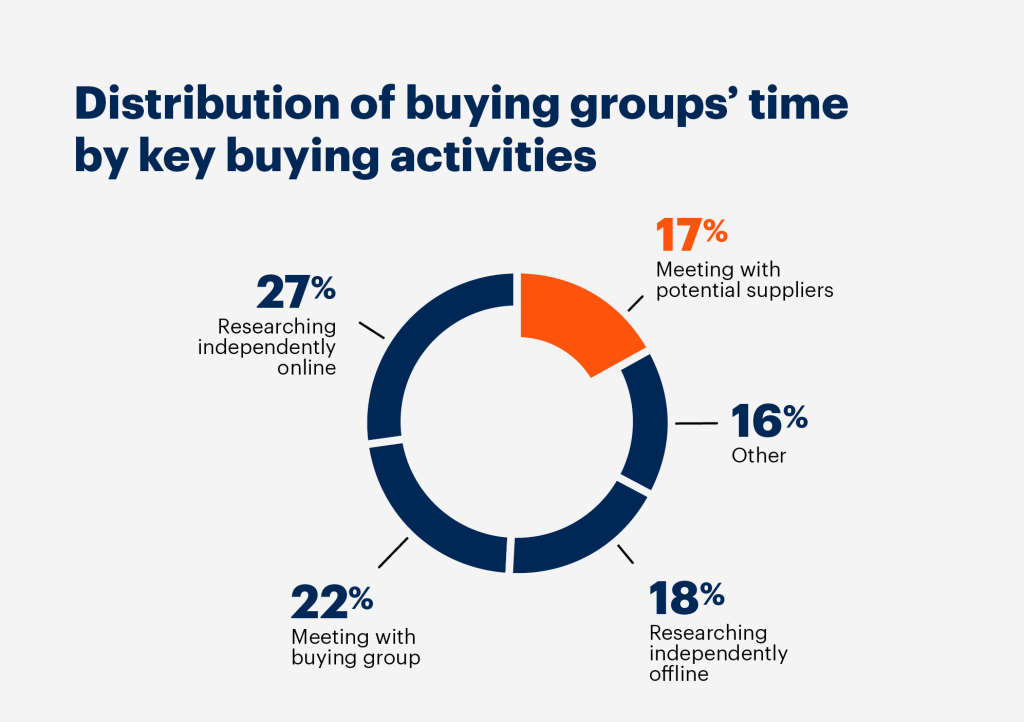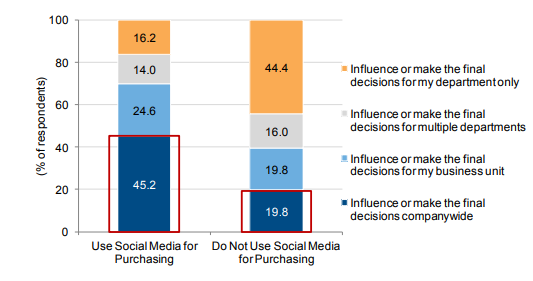
B2B buyers are hard to please. Notably, the changes in their buying pattern and new challenges in this segment of business have complicated the selling process further. Companies that fail to recognize these new realities will struggle to grow their business. If you are a beginner or unable to draft a right strategy to get the most-valued B2B buyers, this blog guarantees to help you. We are here with some of the useful tips gathered from the key insights of several sales research reports. Have a look at it before preparing your sales script.
Table of Contents
1. Increased Length of B2B Sales Cycle
B2B sales cycle are getting longer now. According to the Demand Gen Report, 31% of buyers revealed that their length of B2B purchase cycle had increased substantially than the previous year. The primary reason behind this increment is the time spent on researching the product. By giving all the essential content in the form of reports with its impact on the buyers may reduce this research time favorably. However, ensure that your materials are tailored to each type of buyer. And, also each phase of the procurement cycle.
B2B buyers in different roles do not care about the same things. For instance, a CTO worries more about technology, while a CFO focuses on cost. Also, the form of content matters. A millennial buyer might want to watch product description videos, whereas baby boomers usually prefer detailed case studies or white papers. So, it’s your responsibility as a sales representative to alter the content type and style based on the target demographics (age, seniority, etc.) and psychology (challenges, pain points, etc.). The reduced length of sales cycles will have the edge over the competitors in earning more purchases from buyers.
2. Buying Process Involves More People
According to the latest report by Harvard Business Review, the number of people involved in B2B purchases has raised from an average of 5.4 to 6.8 today, and these decision makers come from different roles, functions, as well as geographies. The subsequent divergence in the priorities makes it challenging for these groups to agree on anything quickly. However, by providing customized experiences for each of them, you can grab their attention. Make sure to have personalized content and sales strategy in place that makes it easy for your buyers to make purchase decisions.
Also, one needs to learn that some people’s opinions matter more than others in such groups. With the help of social media, online research, or real-world connections, you can learn more about the influential buyers in the group. Besides, you will also know their problems and the type of solution they are looking forward to. It helps you in getting them on your side and also persuade the rest of the team to buy from your company.
3. B2B Buyers Make Bulk of Research
We already learned that B2B sales cycle is getting lengthier because of the time spent on researching the product and other solution providers. This bulk of the research, along with outreach and evaluation, generally occurs during the first three months of the sales cycle. The survey by Demand Gen Report says that whopping 45% of buyers are spending more time researching purchases than a year ago. Gartner research report supports this statement. It reveals that buyers spend only 17% of their time meeting with possible suppliers, whereas remaining on research and other activities.
Source: Gartner
In fact, the time taken to research a purchase both online and offline depends on the size of the deal. For instance, an investment worth more than $200,000, buyers may research products for more than 50 hours. And, a purchase valued at less than $1,000, buyers spend 3 to 4 hours or less on research. It’s known that with each iteration, they work harder to ensure that they fully understand the requirements and the alternatives. Although your prospective customers are trying their best to dig more information about your brand, you need to be on the spot with contents that satisfy the buyer’s needs, industry, as well as their business hurdles.
4. B2B Buyers Expect you to Stay With Them
Selling your products and providing excellent customer experience isn’t enough to grow your business in today’s world. B2B buyers think far beyond than buying your product. Along with the pleasing result, they expect you to be there for them after the sale. For instance, they want to know how fast one can integrate the product or service into their business plans, or the type of support they need after integration, and more. That is, B2B journeys are not just complex or technical, but they also tend to be prolonged with constant interaction of services and sales touch points. So, you need to assure them how your firm works to help them succeed.
You can support the unique needs of the client base by creating the tracks where you can split the journey of the buyers based on a specific interest. It results in a smoother experience and significantly lower costs. A journey coordinator or relationship manager can orchestrate as well as monitor this end-to-end journey.
5. Social Media Has Become the New Channel for Buyers
Social media isn’t limited to B2C. Buyers from B2B segments are increasingly using this platform to shop as well as learn more about the products. As per the Social Buying Study from IDC, 75% of B2B buyers used social media to aid their purchase decisions. It includes 84% of C-level and VP-level buyers as well. The social buyers have a greater span of buying control than non-users.
 Source: IDC
Source: IDC
So, how does a B2B buyer make use of social media? They use it to learn more about the current issue, read existing discussions, contact individuals, get support as well as suggestions from users, and reach out to vendors openly. Therefore, to get a competing edge on social media, companies must train the salespeople to be proactive. By solving queries, watching conversations, giving ideas, and helping the prospects without an agenda will boost your brand worth and prove your accessibility on the platform of their choice.
6. B2B Buyers Require Easy Access to Information
B2B buyers expect you to provide all the vital materials required to make purchase decisions. Although lots of data are available while studying any solutions, most of the customers say it’s crucial for vendors to share relevant content that captures their needs. So, how does a sales team fulfill this demand of the prospect? The answer is pretty simple. Come up with the highly interactive website design that speaks about your brand. And, also shows your expertise in a distinct niche. Also, make contents in various forms such as whitepapers, case studies, and data sheets easy to access. Moreover, provide competitive information, including price details (if necessary) on your page.
With this information, you can gain the customer’s trust quickly and also improve the quality of leads within no time. Especially, providing the tailored content to specific concerns works best compared to a more generic material. To create customized content, the organizations must build buyer personas in the first place. This strategy might take some of your time. But the outcome will surprise you with no uncertainty. If customers contact you from being happy with the quality of content, make sure your team will be there to guide them in the sales funnel. Explain to them all the viable solutions and also tell them how your solution helped other firms.
Final Thought
B2B sales prospecting has become challenging and sometimes discouraging with the growing expectation of customers and salesperson. Old-fashioned pitching and prospecting techniques are no longer effective for your business. This has clearly created a problem for so many professionals, no matter what industry they are into. By considering the strategies mentioned in this write-up, the sales team can breathe new life into their selling efforts. Hopefully, these thoughts are adequate to give you the push you need if your prospecting process doesn’t provide the sought results like before.

